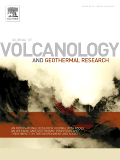
JOURNAL OF VOLCANOLOGY AND GEOTHERMAL RESEARCH
Scope & Guideline
Unveiling the Secrets of Volcanoes and Geothermal Energy
Introduction
Aims and Scopes
- Volcanic Processes and Eruptions:
The journal emphasizes research on the mechanisms of volcanic eruptions, including their physical, chemical, and geological processes, as well as the factors influencing eruption dynamics. - Geothermal Systems and Energy:
Studies related to geothermal energy production, including the geochemical, geological, and engineering aspects of geothermal systems, are a central theme in the journal. - Monitoring and Hazard Assessment:
The journal publishes research on various monitoring techniques (e.g., seismic, geodetic, and remote sensing) for assessing volcanic activity and related hazards. - Magma Dynamics and Evolution:
Research focusing on the storage, movement, and differentiation of magma, including the study of magmatic plumbing systems and their implications for volcanic behavior. - Geochemical and Isotopic Studies:
The journal features studies utilizing geochemical and isotopic analyses to understand the origins and evolution of volcanic materials and their implications for volcanic hazards. - Interdisciplinary Approaches:
The integration of various scientific disciplines, including geology, geophysics, geochemistry, and remote sensing, is promoted to facilitate a comprehensive understanding of volcanic and geothermal phenomena.
Trending and Emerging
- Machine Learning and Data Science Applications:
There is a growing trend towards utilizing machine learning and artificial intelligence techniques to analyze volcanic data, enhance eruption forecasting, and automate seismic event classification. - Integrated Monitoring Systems:
Research focusing on the development and application of integrated monitoring systems combining multiple data sources (e.g., seismic, gas emissions, thermal imaging) for comprehensive volcanic surveillance is on the rise. - Climate Change and Volcanic Interactions:
Emerging studies are examining the interactions between volcanic activity and climate change, particularly how eruptions may influence atmospheric conditions and vice versa. - Magma-Water Interactions:
Research into the interactions between magma and water, including hydrothermal systems and phreatomagmatic eruptions, is gaining traction as it is crucial for understanding explosive volcanic behavior. - Geothermal Resource Assessment:
An increasing emphasis on assessing geothermal resources for sustainable energy solutions is evident, reflecting global interests in renewable energy sources and geothermal potential.
Declining or Waning
- Historical Volcanic Activity Studies:
Research centered on historical eruptions and their impacts has seen a decrease, possibly due to a shift towards real-time monitoring and predictive modeling of volcanic activity. - Local Case Studies:
There has been a waning interest in localized, case-specific studies as researchers increasingly favor broader, regional analyses that incorporate multiple volcanoes and geothermal systems. - Purely Theoretical Models:
The focus on purely theoretical models of volcanic processes without empirical validation has diminished, as there is a growing demand for data-driven studies that incorporate field observations. - Traditional Geophysical Techniques:
The reliance on traditional geophysical methods, such as basic seismic or magnetic surveys, appears to be declining in favor of more advanced techniques like machine learning and integrated geophysical modeling.
Similar Journals
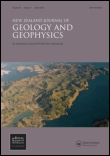
NEW ZEALAND JOURNAL OF GEOLOGY AND GEOPHYSICS
Unveiling the Earth's Secrets Through Rigorous Research.NEW ZEALAND JOURNAL OF GEOLOGY AND GEOPHYSICS, published by Taylor & Francis Ltd, stands as a prominent forum dedicated to the interdisciplinary exploration of geological and geophysical phenomena. With an impact factor that situates this journal in the prestigious Q1 category across key subjects—namely Earth and Planetary Sciences, Geology, and Geophysics—it is a critical resource for researchers, professionals, and students alike. The journal has been operational since 1958 and continues to contribute valuable insights into the complexities of the Earth's processes. Although it does not currently offer Open Access options, its broad readership benefits from an extensive archive of high-quality research findings that span from 1958 to 2024. Located in the United Kingdom, the journal remains a pivotal player in advancing the understanding of Earth's systems, making significant contributions to both academic inquiry and practical applications in the field.

Applied Geophysics
Transforming Geophysical Knowledge into Practical SolutionsApplied Geophysics is a premier journal dedicated to the interdisciplinary study of geophysical processes and their applications across various domains, published by SPRINGER. With an ISSN of 1672-7975 and an E-ISSN of 1993-0658, this journal serves as a pivotal platform for researchers, professionals, and students to share their latest findings and insights in the field of geophysics. Operating from China, the journal has established itself within the Q3 quartile in Geophysics as of 2023, reflecting its commitment to high-quality research, even as it ranks #105 out of 165 in the Earth and Planetary Sciences category, placing it in the 36th percentile on Scopus rankings. This makes it an essential resource for advancing knowledge in geophysical methodologies and applications. While it operates in a traditional subscription model, its relevance and timeliness ensure it remains a crucial outlet for emerging scientific discussions. The journal particularly encourages the integration of practical applications with theoretical frameworks, fostering innovation in areas such as environmental geophysics, resource exploration, and hazard assessment.
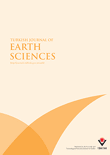
TURKISH JOURNAL OF EARTH SCIENCES
Shaping the Future of Geological ResearchTURKISH JOURNAL OF EARTH SCIENCES, published by the Tubitak Scientific & Technological Research Council Turkey, is a premier platform dedicated to advancing the field of Earth and Planetary Sciences. With an ISSN of 1300-0985, this journal has been a significant contributor to the international scientific community since its inception in 2002, and is set to continue publishing groundbreaking research through 2024. As a recognized journal in the Q2 quartile of Earth and Planetary Sciences, it ranks #98 out of 195 in its category according to Scopus metrics, positioning it within the 50th percentile of its field. The journal emphasizes peer-reviewed research, providing invaluable insights that facilitate scholarly discourse and promote rigorous investigation into various aspects of the Earth sciences. Although it does not currently offer open access, the journal remains a vital resource for academics, professionals, and students seeking to deepen their understanding of geological phenomena and contribute to the advancement of this essential discipline.

China Geology
Unveiling the Secrets of China's GeologyChina Geology, published by KEAI PUBLISHING LTD, is a leading open-access journal that serves as a pivotal platform for disseminating high-quality research across a wide spectrum of Earth sciences. Since its inception in 2018, the journal has rapidly established itself with an impressive Q1 ranking in multiple critical categories, including Geology, Economic Geology, and Oceanography, among others, reflecting its significant contribution to the academic community. Positioned as a top-tier journal in the Earth Planetary Sciences domain, it ranks #22 out of 321 in Geology and exhibits an admirable impact in sub-fields such as Earth-Surface Processes and Geochemistry and Petrology. China Geology is committed to promoting rigorous scientific inquiry and facilitating the open exchange of knowledge in the geosciences, making it an essential resource for researchers, professionals, and students eager to explore innovative developments and fundamental advances in geology. The journal’s accessibility ensures that critical findings reach a broad audience, thereby enhancing collaboration and driving forward scientific discourse in the global community.

DOKLADY EARTH SCIENCES
Bridging Gaps in Earth Science UnderstandingDOKLADY EARTH SCIENCES is a reputable journal published by MAIK NAUKA/INTERPERIODICA/SPRINGER, focusing on the dynamic field of Earth and Planetary Sciences. With an ISSN of 1028-334X and E-ISSN 1531-8354, this journal offers a platform for researchers to disseminate their findings and insights that contribute to our understanding of Earth systems over a continuous publishing span from 1998 to 2024. It currently holds a Q3 quartile ranking in the Earth and Planetary Sciences category, reflecting an emerging yet significant impact within its field, evidenced by its Scopus ranks where it stands at 123rd in general Earth sciences and 113th in miscellaneous Earth sciences. DOKLADY EARTH SCIENCES aims to bridge research gaps and foster collaboration among a diverse audience including researchers, professionals, and students committed to advancing knowledge in geoscience. The journal stands as a vital resource for those seeking to explore contemporary challenges and innovations within the realm of Earth sciences.
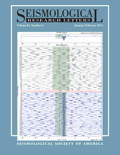
SEISMOLOGICAL RESEARCH LETTERS
Connecting global minds through groundbreaking geophysical research.SEISMOLOGICAL RESEARCH LETTERS is a leading journal in the field of geophysics, published by the Seismological Society of America. With its ISSN 0895-0695 and E-ISSN 1938-2057, this prestigious publication serves as a vital platform for disseminating groundbreaking research and advancements in seismological science. The journal boasts an impressive Q1 categorization in the 2023 rankings and ranks 23rd out of 165 in Earth and Planetary Sciences, Geophysics, placing it within the 86th percentile among its peers. Spanning an illustrious history from its origination in 1984 to its ongoing contributions through 2024, it is dedicated to fostering a deeper understanding of seismic phenomena. Although it currently does not offer open access, researchers, professionals, and students can benefit from timely insights and comprehensive studies presented in its pages. Set within the heart of the United States, the journal stands as a cornerstone in geophysics, connecting a global community eager to advance their knowledge and impact in the field.
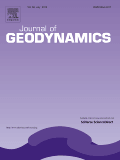
JOURNAL OF GEODYNAMICS
Innovating Insights into Earth-Surface Processes and GeophysicsJOURNAL OF GEODYNAMICS is a leading scholarly journal published by PERGAMON-ELSEVIER SCIENCE LTD, focusing on the dynamic interactions of geological and geophysical processes. With a distinguished impact factor reflective of its significance in the field, this journal operates from the United Kingdom and has been an essential platform for innovative research since its inception in 1984. It encompasses a wide range of topics within Earth-Surface Processes and Geophysics, consistently ranking in the upper quartiles (Q1 and Q2) as per the 2023 category rankings, thereby providing a robust avenue for researchers seeking to contribute to high-impact advancements in these fields. The journal is indexed in Scopus, bolstering its visibility with admirable ranks, including 44th out of 165 in Geophysics. While it does not currently offer open access options, the journal remains pivotal for academics aiming to deepen their understanding of geodynamic mechanisms and foster interdisciplinary collaboration. For over three decades, the journal has served as a cornerstone resource for professionals, researchers, and students eager to explore and publish groundbreaking findings in geoscience.
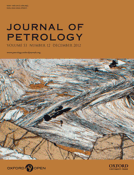
JOURNAL OF PETROLOGY
Connecting Researchers to the Heart of PetrologyJOURNAL OF PETROLOGY is a prestigious academic journal published by Oxford University Press, dedicated to the fields of geochemistry, petrology, and geophysics. Established in 1960, it has garnered significant recognition within the scientific community, currently holding an impressive Q1 ranking in both Geochemistry and Petrology as well as Geophysics, as of 2023. The journal is indexed in Scopus, ranking 20th out of 165 in Geophysics and 31st out of 154 in Geochemistry and Petrology, reflecting its high impact and contribution to Earth and Planetary Sciences. Designed for researchers, professionals, and students, the journal publishes cutting-edge research and reviews that advance our understanding of igneous and metamorphic processes, mineralogy, and the Earth's structure. With a commitment to rigor and scientific excellence, JOURNAL OF PETROLOGY serves as a vital resource for developing new concepts and methodologies in the study of Earth’s materials and processes.

Andean Geology
Cultivating a Community of Earth Science InnovatorsAndean Geology is a prominent open-access journal, published by the SERVICIO NACIONAL GEOLOGIA MINERVA in Chile, dedicated to advancing the fields of geology, geochemistry, petrology, paleontology, and stratigraphy. Since its inception in 2009, the journal has provided a vital platform for the dissemination of research pertaining to the Andean region and beyond, featuring high-quality articles that contribute to our understanding of earth sciences. With an impressive ranking in the Q2 and Q3 quartiles across multiple categories, it reflects a growing impact in the geological community, evidenced by its status within Scopus rankings. Andean Geology not only supports the academic pursuit of knowledge with its open-access policy but also aims to foster collaboration among researchers and professionals worldwide, ensuring wide accessibility of groundbreaking research and promoting academic engagement. By covering a diverse array of topics relevant to the dynamic field of geology, this journal serves as an essential resource for students, professionals, and scholars dedicated to earth and planetary sciences.

Solid Earth
Innovative Insights into Earth's ProcessesSolid Earth is a prestigious open-access journal published by COPERNICUS GESELLSCHAFT MBH, dedicated to advancing the understanding of geological and environmental sciences. With an ISSN of 1869-9510 and E-ISSN 1869-9529, this journal has been at the forefront of the Earth sciences since it became fully open access in 2010. Based in Göttingen, Germany, it features a rich array of interdisciplinary research relevant to earth-surface processes, geochemistry, paleontology, and geophysics, among other fields. The significance of Solid Earth is underscored by its rankings in the Q1 category across multiple related disciplines, demonstrating a strong impact factor within the community. As of 2023, it stands out with an impressive Scopus ranking, pushing the boundaries of knowledge and research excellence. By providing a platform for high-quality scientific contributions, Solid Earth is essential for researchers, professionals, and students looking to explore and disseminate impactful findings in the pursuit of sustainable earth science advancements.